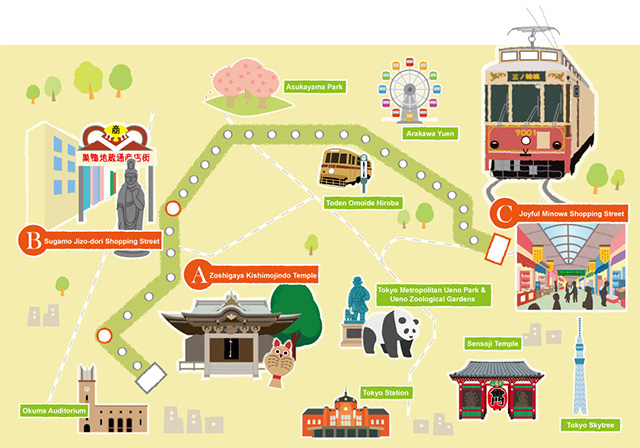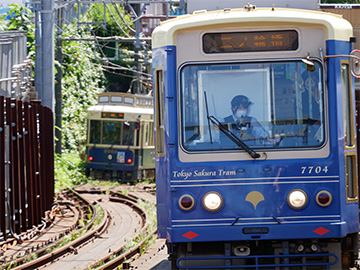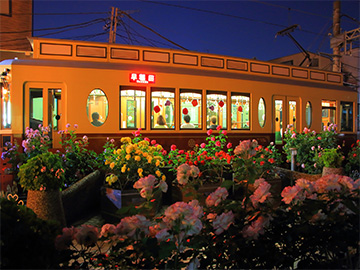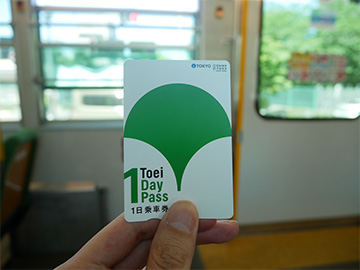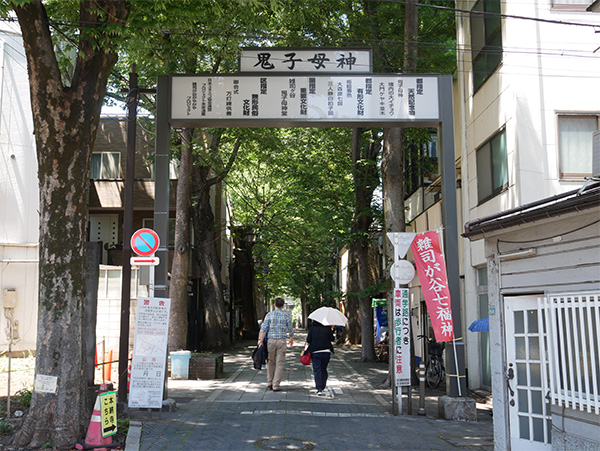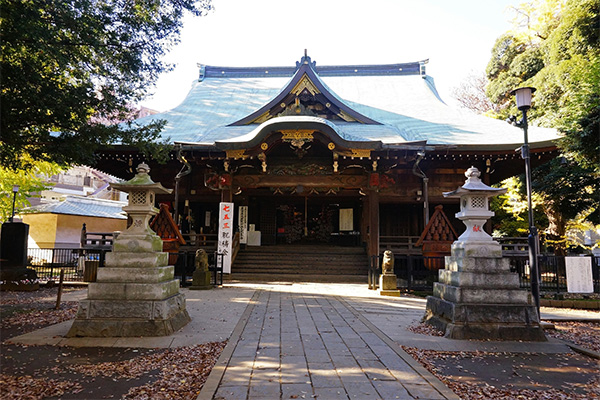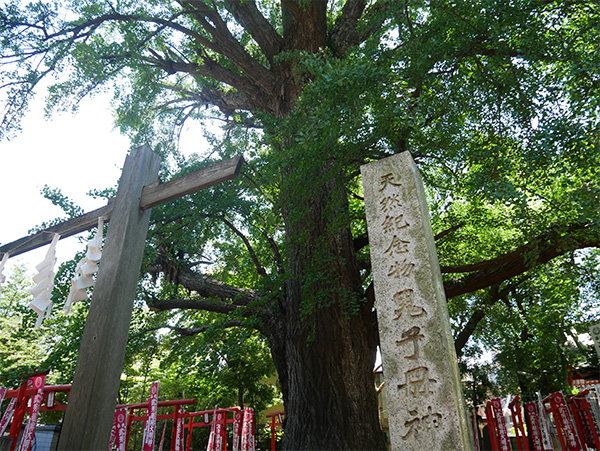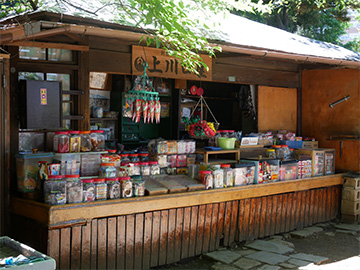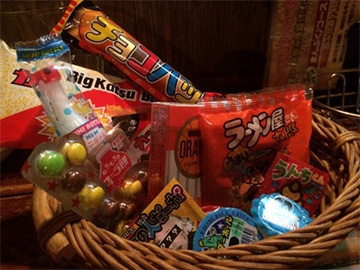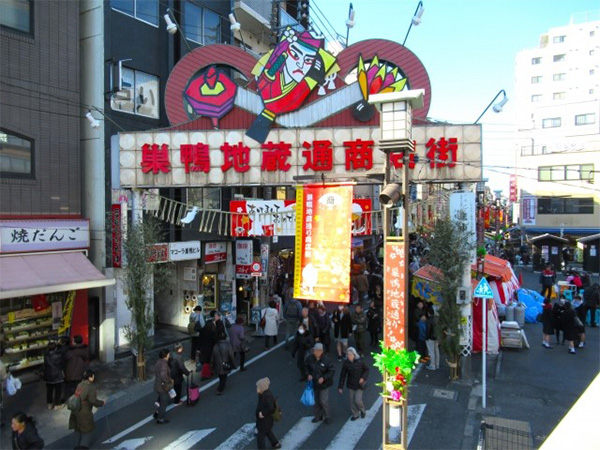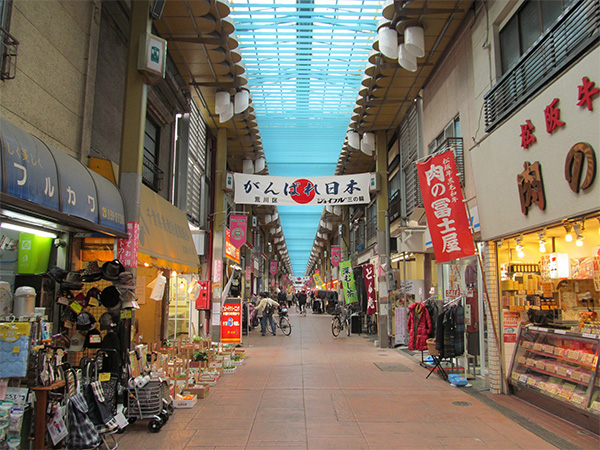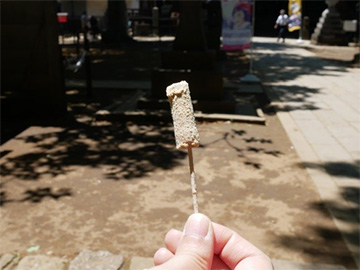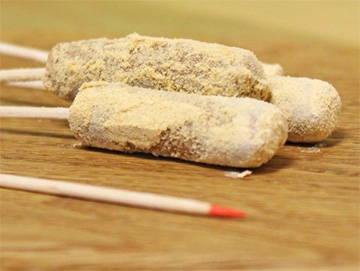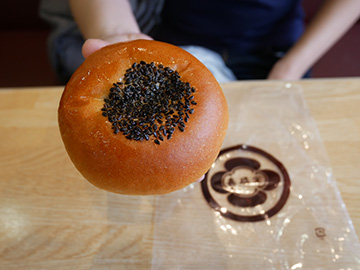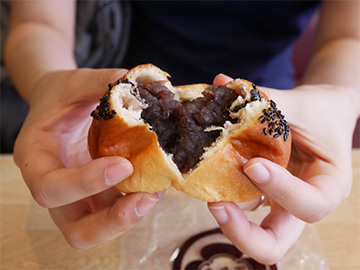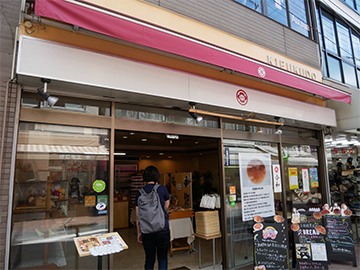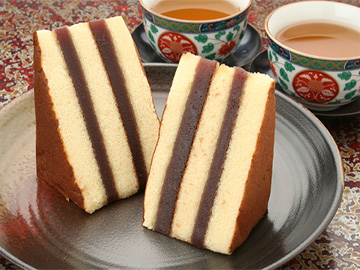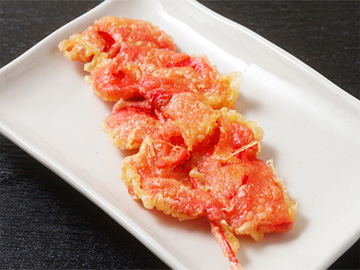Web Japan > Trends in Japan > Food & Travel > Experience the Nostalgic Atmosphere of the Tokyo Shitamachi from a Chin-chin Densha
Experience the Nostalgic Atmosphere of the Tokyo
Shitamachi from a ,Chin-chin Densha
Trams that travel on roads together with cars are well-known by many in Japan, and have the nickname Chin-chin Densha (ding ding trains). There are several variations of how this nickname came to be, but one theory says that the name was taken from the ringing sound of the bell that conductors used for signaling to the tram operator. In this way, we can see how these trams were a familiar scene in daily life, with close ties to citizens.
However, trams had no choice but to gradually downsize due to the advancement of other methods of transportation such as automobiles. In Tokyo, the Toei Transportation Customer Center’s “Tokyo Sakura Tram” (Official name: Toden Arakawa Line) is the last tram route left in the city.
The Tokyo Sakura Tram has 30 stops and transports approximately 50,000 passengers a day. It is an indispensable train route for many people who live along the line. Apart from the tram line, the Shitamachi area along the route still possesses a distinctive nostalgic and traditional atmosphere, which is a sharp contrast against the cutting-edge, trendy city centers of Shibuya or Ginza.
The scenery along the tram route and the tram itself offer the perfect opportunity to catch a glimpse of traditional Japanese culture and lifestyle.
Time-honored Japanese culture and lifestyle found along the Tokyo Sakura Tram route
One attractive feature of the Tokyo Sakura Tram, the last tram route left in Tokyo, is how visitors can experience traditional Japanese culture and lifestyle found within the old-fashioned Shitamachi cityscape along the route.
Disembarking at the Kishibojimmae stop and taking a one-minute stroll through a lush green approach takes you to the Zoshigaya Kishimojindo Temple (a structure enshrining Shinto deities and Buddhas), a nationally designated important cultural property. Kishimojin—the god of safe childbirth and childrearing—is worshiped here and has been held dear by local residents for 1,200 years since the temple’s foundation. A mystical atmosphere pervades throughout the grounds, with the historical main shrine containing the Kishimojin and a large ginkgo tree that is said to be around 700 years old. The distinctive silence and calm here makes it difficult to believe that it is located in an urban area.
Within the shrine grounds, you can find the oldest traditional candy shop in Japan, founded in 1781 and doing business ever since the Edo era. This type of candy shop sells cheap sweets and toys, and its storefront features various traditional confectionery that all Japanese children will have tried once, offering a glimpse into Japanese culture and history. The store’s old-school visuals and colorful candies are picturesque, making it a perfect location for souvenir photos.
Kamikawaguchi-ya, the oldest candy shop in Japan. The storefront features colorful sweets
Visitors who want to experience vintage Japan are encouraged to stop at the Sugamo Jizo-dori Shopping Street. A short walk from the Koshinzuka stop, this street is full of restaurants and apparel shops catering to the non-stop flow of senior citizens that come to shop or visit shrines. The street is also called “Granny’s Harajuku,” as the sight of seniors congregating here bears a resemblance to Harajuku, famous as the area where the younger generation are keen to flock to. Many sightseers—both domestic and from abroad—can also be seen at the Sugamo Jizo-dori Shopping Street.
Visitors wanting a first-hand experience of the Shitamachi lifestyle can travel to the end of the tram route and disembark at the Minowabashi stop to explore the Joyful Minowa shopping street that begins right at the tram stop. Charming coffeeshops from yesteryear and public baths, a unique aspect of Japanese culture, line the street to offer visitors a feel of the bustling Shitamachi and the people who live there.
Shitamachi dining from Japan’s past generations can be found on the Tokyo Sakura Tram route
In order to get the feel of Japanese culture and history, one must not forget to sample the unique dishes in the region. The Tokyo Sakura Tram also offers traditional cuisine famous to the area.
Sampling kinako-ame is highly recommended at the aforementioned Zoshigaya Kishimojindo candy shop. This candy features starch syrup made by saccharifying starch and soybeans, and is seasoned with soybeans roasted and turned into a powder called kinako. It is slightly sweet and is a long-seller among Japanese children. These candies are skewered on toothpicks for sale, and eating the candy may sometimes reveal a red tip on the toothpick, indicating that you can receive another kinako-ame for free. The low price of 12 yen per skewer is also characteristic to this type of candy shop, and you may find enjoyment in sampling this candy until a red toothpick appears.
Kamikawaguchi-ya visitors will receive a free kinako-ame skewer if they come across a toothpick with a red tip
The anpan rolls sold at the Sugamo Jizo-dori Shopping Street also deserve mention. These anpan rolls, which are also frequently featured in domestic media and magazines, are stuffed with adzuki beans which have been sweetened and boiled down into a paste. Sampling a freshly baked anpan allows you to enjoy uniquely fluffy and soft bread dough combined with moist adzuki beans, which is guaranteed to bring a smile to your face.
The Sugamo Jizo-dori Shopping Street also has a shop which gave birth to the sweet called shio-daifuku. Shio-daifuku features sweet bean paste within mochi, which is a grain called mochigome that is steamed and pounded. Here, visitors can enjoy various culinary delights unique to Japan, such as the Siberia dessert with sweet bean paste inside castella sponge cakes made by steaming a mixture of flour, eggs, milk and sugar.
For the adventurous visitor looking for something different, sampling the red pickled ginger tempura at Joyful Minowa is highly recommended. This features ginger root pickled in plum vinegar, which is then coated with tempura batter using flour and deep-fried to create a taste that cannot be experienced anywhere else. The acidity of the red pickled ginger combined with the sweet tempura batter is sure to be an eye-opening experience.
Why not spend a leisurely day, riding on a historical Chin-chin Densha and exploring important cultural properties, shopping streets and Shitamachi cuisine?


